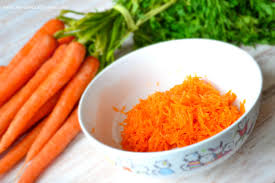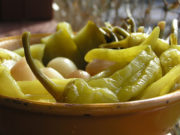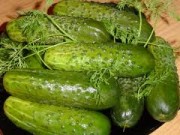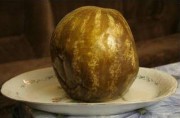Sauerkraut for the winter (tasty and crispy) - recipe and preparation: how to properly prepare and preserve cabbage for the winter
Sauerkraut is a very valuable and healthy food product. After the end of lactic acid fermentation, it retains many different useful substances and vitamins C, A and B. Salads, side dishes and other dishes made from sauerkraut improve intestinal microflora and normalize digestion.
Dishes made from sauerkraut are present in almost all national cuisines of Europe. It’s not for nothing that sauerkraut is called a natural healer. In addition to sauerkraut, they also make pickled cabbage for the winter. But it is considered less healthy due to the use of vinegar in the marinade.
Cabbage preparations for the winter are made from winter white cabbage varieties. Preparing cabbage for the winter, if properly prepared, should last 6-9 months. Therefore, proper recipe and preparation are extremely important.
In principle, fermenting or salting cabbage for the winter is simple. Today we will give a classic recipe for sauerkraut. And so, we need:
10 liter container for fermentation,
white cabbage - 9 kg,
carrots - 1 kg,
salt (not iodized) - 170-200 gr.
We clean the cabbage from damaged leaves, wash it and chop it finely.

Wash the carrots, peel them, wash them again and grate them (on a coarse grater).

Pour the required amount of salt into a separate bowl.

And now, how to salt cabbage for the winter:
Place 5-6 handfuls of shredded cabbage, a portion of carrots and salt in a fermentation container. Mix and press with a fist or a wooden masher (you can use the one you use for making puree) until the juice appears.
Add a portion of cabbage, carrots and salt again and mix and tamp again until juice appears.
We do the above until the raw materials run out.
If desired, during the cooking process black pepper, onion, dill and caraway seeds are added to the cabbage, but if you want to prepare cabbage for the winter according to the classic recipe, then we can do without the listed spices.
Laying and salting the cabbage will be completed when, when pressing the cabbage, a layer of juice appears above it.
Now we place a special wooden circle of appropriate size on top of the cabbage or just a plate or lid of the required size, and put a weight (weight) on top. This could be a special clean stone or just a large jar of water.
Make sure that all the shredded cabbage is covered with cabbage juice.
Between the pressure and the wall of the fermentation container, you need to stick a wooden rolling pin or other object so that the gases formed during fermentation escape.
If the kitchen is warm, then after three days the fermentation will end. During fermentation, it will be good if you can pierce the cabbage 2-4 times a day, reaching to the bottom, with a knife or knitting needle. The release of gases accelerates fermentation. If this is not done, the cabbage may develop a bitter taste.
Since the fermentation time may vary depending on the temperature of the room where your sauerkraut is located, we advise you to pay attention to the characteristic signs by which you can determine the readiness of the cabbage: the brine brightens, gas evolution stops and the foam disappears.
And of course, the main criterion is to taste it.
The sauerkraut is ready - cover the fermentation container with a clean cloth and put it in a cool place for storage.
If you want, you can put the sauerkraut into three-liter jars, add brine, cover with a plastic lid and put it in the basement, refrigerator or other cool place. Many people store sauerkraut in jars on their balconies.
Health to you and your families!
People say that it is better to see once than to hear or read a hundred times. Therefore, we suggest you see how to prepare sauerkraut in a video recipe from EcoMistress























